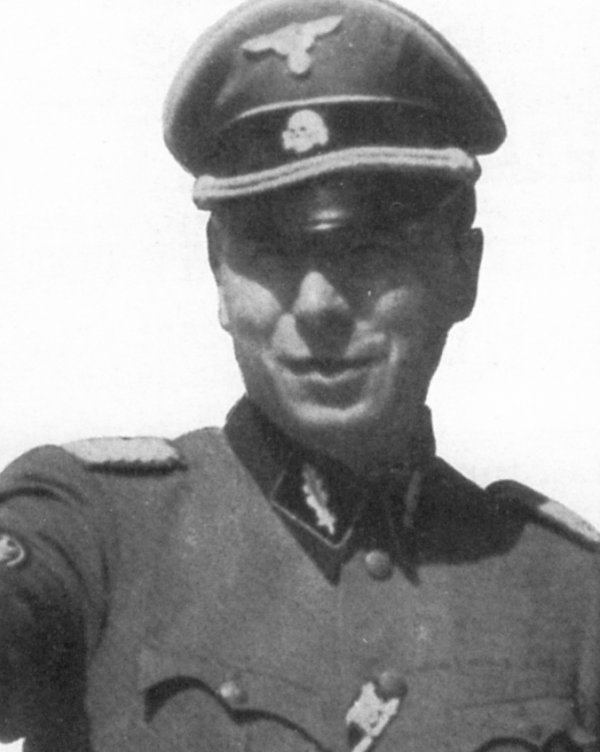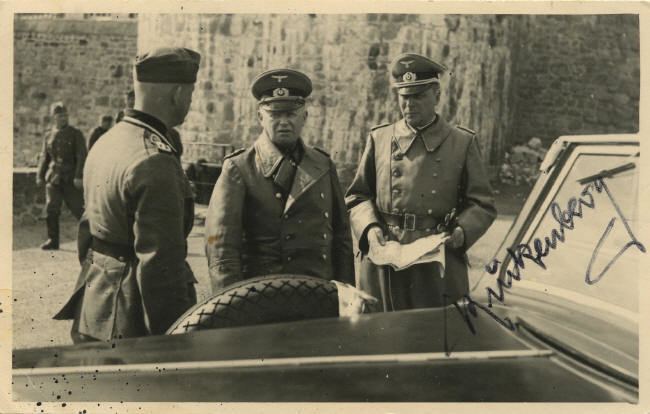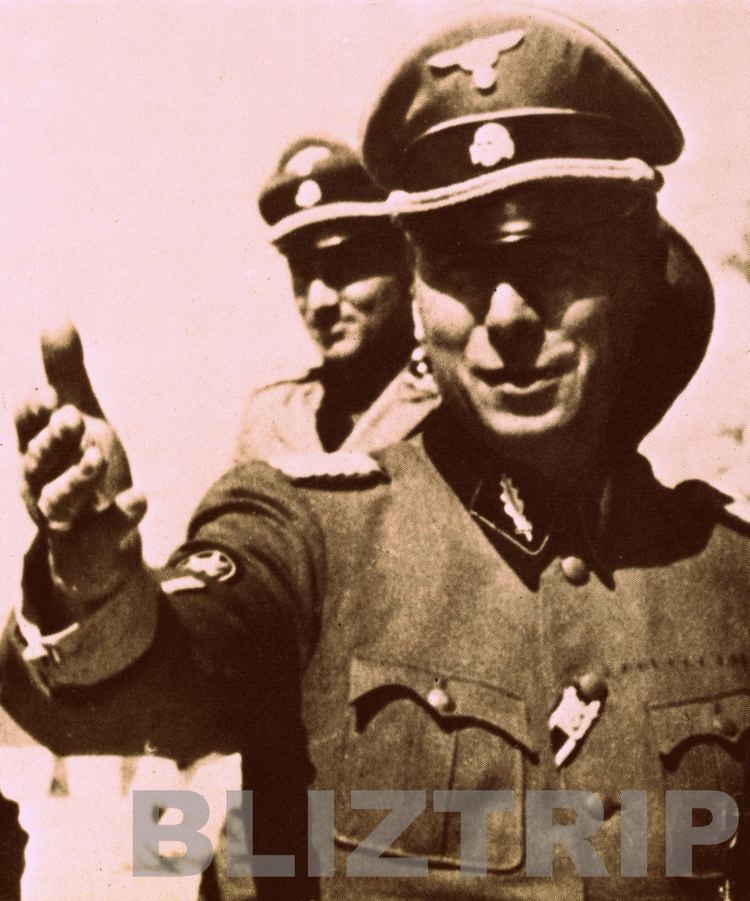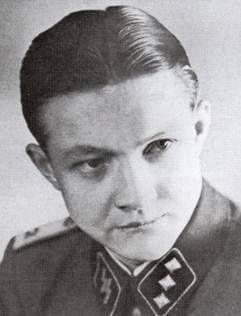Years of service 1907–181939–45 | Name Gustav Krukenberg Rank Brigadefuhrer | |
 | ||
Service number NSDAP #1,067,635SS #116,686 Battles/wars World War IWorld War II Commands held 33rd Waffen Grenadier Division of the SS Charlemagne (1st French) | ||
Gustav Krukenberg (8 March 1888 – 23 October 1980) was Brigadeführer of the Charlemagne Division of the Waffen-SS and further commander of its remains and the SS Division Nordland during the Battle of Berlin in April 1945.
Contents

Life

Krukenberg was born in Bonn, the son of a professor at Bonn University and his mother was the daughter of the archeologist Alexander Conze. He gained a doctorate in law and joined the army in 1907. He married in 1912. During World War I, he served as an ordnance officer and adjutant and was promoted to Hauptmann in 1918. After the war he served in the Civil Service as the private secretary to the Foreign minister and was briefly a director in industry. He joined the Nazi Party in 1932 and he worked at the propaganda ministry after Adolf Hitler came to power and was a member of the Allgemeine SS.

With the outbreak of World War II Krukenberg re-joined the army as a major and served on the General Staff in Paris. In December 1943 he transferred from the Wehrmacht Heer, in which he had reached the rank of Oberstleutnant, to the Waffen-SS which he joined with the equivalent rank of Obersturmbannführer. He was promoted three more times, obtaining the rank of Brigadeführer in 1944. A fluent French speaker, he commanded the French volunteers of the SS Charlemagne Division.
Berlin 1945
On the night of 23/24 April 1945, Krukenberg received a call from Army Group Vistula headquarters. He was summoned to bring the remains of his division to help with the defence of Berlin. Krukenberg roused his men and informed them of the situation. He asked for volunteers to go to Berlin. Although the majority wanted to go, Krukenberg and Hauptsturmführer Henri Joseph Fenet only chose as many volunteers as they could provide transportation. He breached several obstacles to lead the remnants of the division into the city at 2200 hrs on 24 April 1945.
On 25 April, Krukenberg was appointed by General Helmuth Weidling as the commander of (Berlin) Defence Sector C, which included the Nordland Division, whose previous commander Joachim Ziegler was relieved of his command the same day. The arrival of the French SS men bolstered the Nordland Division whose "Norge" and "Danmark" regiments had been decimated in the fighting against the Soviet Red Army forces.
By 26 April, with Neukölln heavily penetrated by Soviet combat groups, Krukenberg prepared fallback positions for Sector C defenders around Hermannplatz. He moved his headquarters into the opera house. As the Nordland Division withdrew towards Hermannplatz, the Frenchmen under Fenet and some attached Hitler Youth destroyed fourteen Soviet tanks; one machine gun position by the Halensee bridge managed to hold up Soviet forces for 48 hours.
After an appeal by Krukenberg, General Weidling agreed to allow the re-deployment of the Norland Division as one unit and not scattered in its employment. Weidling created two sub-sections of Sector "Z"; the Western Sub-sector would be commanded by Oberleutant Seifert. His command post was in the Air Ministry Building. The Eastern Sub-sector would be commanded by Krukenberg where most of the remains of the Nordland were already fighting. The demarcation line was the Wilhelmstrasse. Forced to fall back on 27 April, Krukenberg's Nordland headquarters was a carriage in the Stadtmitte U-Bahn station in Defence sector Z (Central District).
The Frenchmen under Krukenberg proved particularly good at destroying tanks; of the 108 Soviet tanks destroyed in the centre district, they had accounted for "about half" of them. On 29 April 1945 Krukenberg awarded one of the last Knight's Crosses of the war to Unterscharführer Eugène Vaulot.
It is widely believed that on 1 May, Krukenberg attempted to stem the Soviet advance by ordering sappers to blow up the S-Bahn tunnel under the Landwehr canal, causing 25 kilometres of S-Bahn and U-Bahn tunnels to flood, which led to many casualties. But according to author A. Stephan Hamilton, it is far more probable that the massive bombardment of the city by hundreds of tons of shells and rockets by the Soviets caused the flooding of the tunnels. As the Germans made extensive use of the underground (U-Bahn) for redeployment of troops, makeshift hospitals and just a place to take refuge from the constant shelling, it seems highly doubtful that Krukenberg ordered the destruction of the U-bahn tunnels.
After Hitler's death, Krukenberg assembled most of his escort made up of French SS for the breakout. They joined up with Ziegler and a larger group of Nordland troops. They crossed the Spree just before dawn. Near the Gesundbrunnen U-Bahn station they came under heavy fire. Brigadeführer Joachim Ziegler was gravely wounded and died on 2 May. Later, Krukenberg made it to Dahlem where he hid out in an apartment for a week before surrendering to the Red Army.
He died on 23 October 1980.
